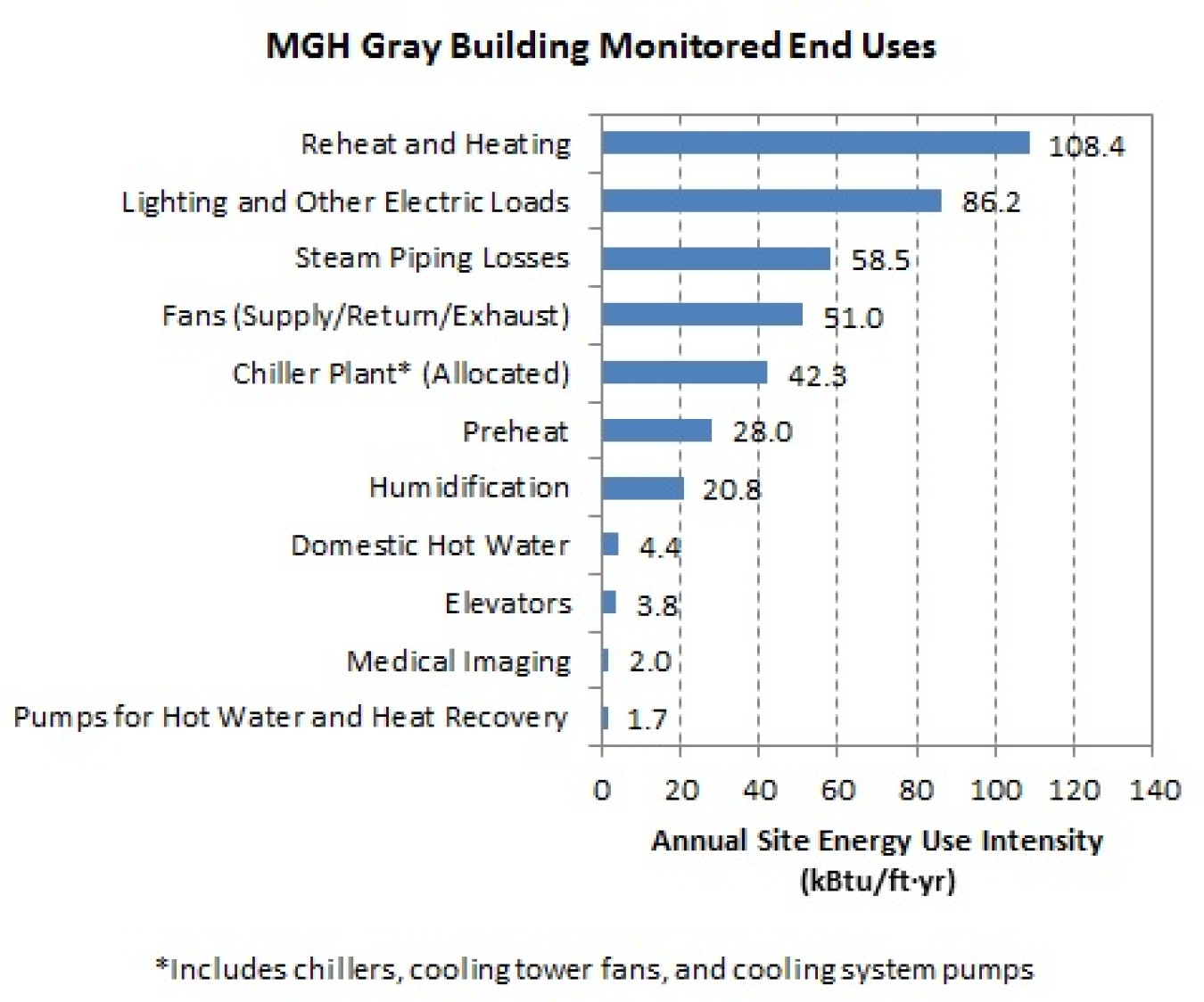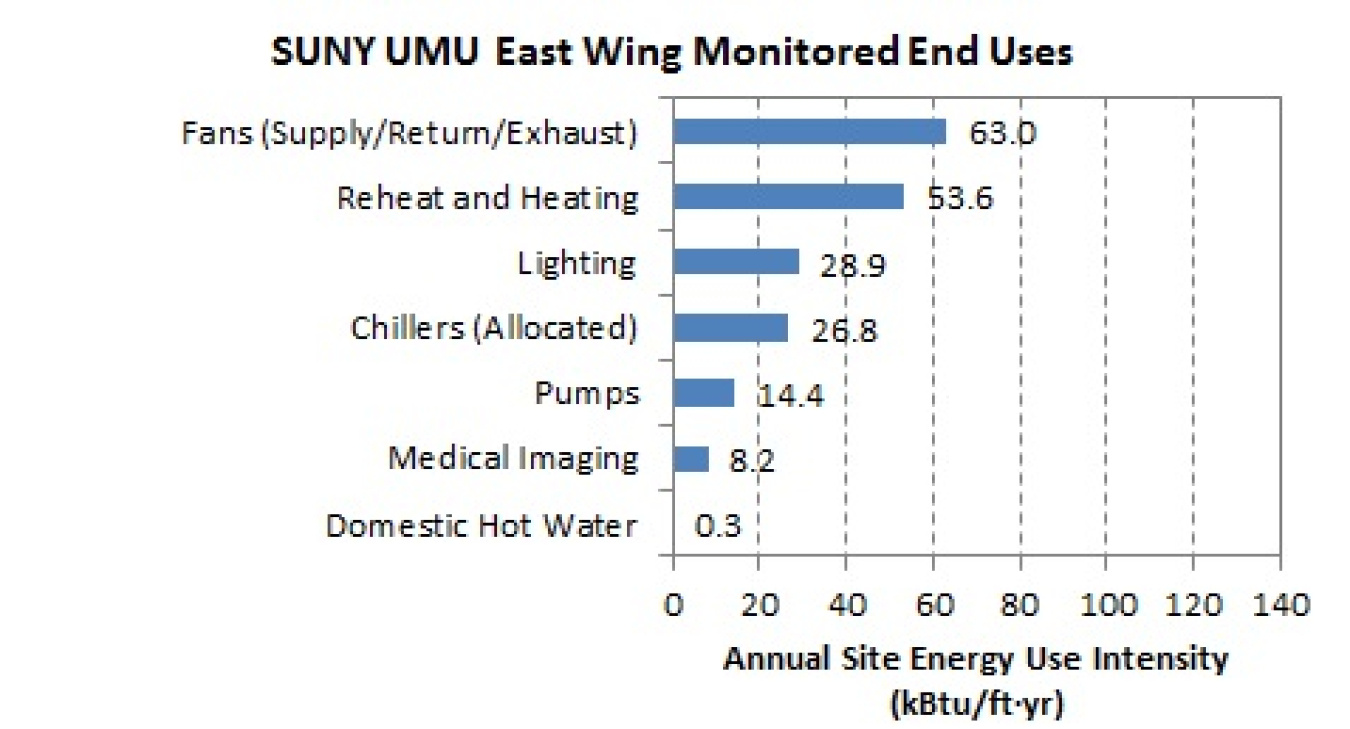Historically, when hospital facility and energy managers have compared alternative energy-efficiency investments for various end-use systems, their benchmarks have been limited to end-use estimates derived from modeling. To address the need for measured data, the Office of Energy Efficiency and Renewable Energy's Building Technologies Office (BTO) partnered with two hospitals to collect data on the energy used by multiple end-use categories, including preheat; heating and reheat; humidification; service water heating; cooling; fans; pumps; space lighting; select plug and process loads. Additional data from medical office buildings were provided for an analysis focused on plug loads.
Hospital Monitoring Projects
NREL, the laboratory overseeing this research, competitively selected the following two hospitals to monitor for one year. Click on a hospital below for more site-specific results.
Highlighted Energy End Uses
Reheat and Heating
Fans and Pumps
Chiller Plant Energy
Lighting and Plug Loads
Medical Equipment
Find more information in the report, Healthcare Energy End-Use Monitoring.
This project was funded through the American Recovery and Reinvestment Act. Facility managers, energy managers, and engineers in the healthcare sector will be able to use these results to more effectively prioritize and refine the scope of investments in new metering and energy audits. The results will benefit stakeholders throughout the healthcare industry, including members of the Better Buildings Alliance, which represents more than 500 million square feet of hospital space.
For more information, read the report, Healthcare Energy End-Use Monitoring.
Complementary Studies
This project complements the University of Washington's hospital end-use energy study and Lawrence Berkeley National Laboratory's (LBNL) hospital benchmarking efforts. LBNL is developing detailed guidance for collecting, processing, and analyzing energy end-use data in hospitals. The goal is to use the data to calculate baseline metrics and normalize the metrics based on weather variations, hospital size, and hospital activity. The metrics for individual hospitals can then be compared to health system portfolios and peer facilities using the real-world data collected by NREL and the University of Washington as well as tools such as EnergyIQ.


